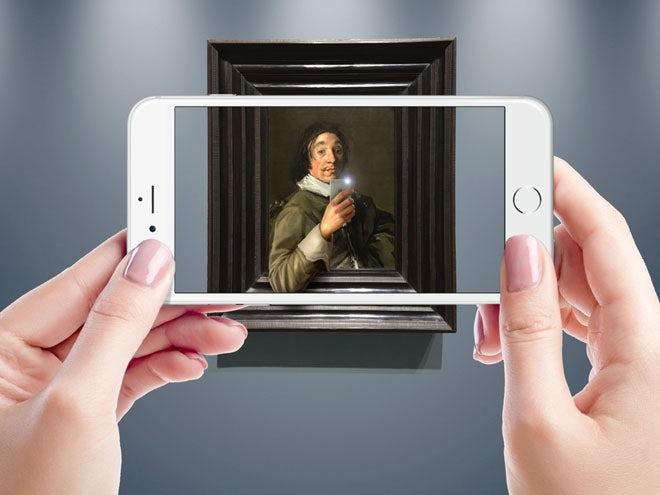This supports other research we’ve applied at PositivePrime… the awe you experience from seeing images of GREEN nature scenes and spectacular vistas is the reasons why we embed so many evocative luxuries into each and every PositivePrime Session (AV program) and why we’re working hard o. The AR & VR AI versions….
V. Interesting read…
(Article from ZDNET click here to see original article)
With art museums closed to the public around the world, a number of enterprising organizations and galleries are rushing their exhibits online in digital curations. But does the experience stack up?
It’s a question with broader implications than just art. Technologists and consumers have long grappled with the verisimilitude offered by AR/VR experiences, questioning whether they will ever measure up to the real thing. Several AR companies are operating in the museum space and have seen increased demand for their products during COVID-related shutdowns, including one called Impossible Things.
Another company, a startup called Cuseum, which develops products such as mobile applications, digital membership cards, and an augmented reality platform for museums, public attractions, and cultural nonprofits, has a vested interest in the answer, which helps explain the study results the company just released in coordination with its “Museum From Home” AR product launch.

“Critics have long debated the role and impact of technology in the display, consumption, and creation of art. Until now, there has never been an empirical study that looks beyond opinion and taps into neurological activity to understand the human brain’s response to art experienced in real-life compared to virtually,” says Brendan Ciecko, CEO & Founder of Cuseum. “Today marks a new milestone in our understanding of how people perceive and react to art through digital channels, and offers immutable support for continuing to make art accessible in all formats. This research underscores that the ‘aura’ of art is not lost when experienced virtually.”
The 10-month long research study focused on the neurological perceptions of original artworks as compared to their augmented reality, virtual reality, and digital versions. The research was conducted by a team of neuroscientists and advised by Dr. Pawan Sinha, a neuroscientist at the Massachusetts Institute of Technology (MIT). The researchers examined the emotive responses to original artworks versus their digital equivalents.
According to the research team, the “current EEG findings would suggest that aesthetic experience is not denigrated by a digital interface representation and, in fact, digital reproductions in the case of augmented reality are shown to improve the magnitude of brain activity compared to the viewing of original works of art.” In other words, a digital experience may even intensify the emotional impact of art in some cases.
An overview of the study and full report can be found here.
The research seems to support the claim that AR and VR can provide an equally immersive and neurologically stimulating experience on par with that of viewing the authentic, original artwork in-person at a museum or gallery, which may have profound implications for other questions concerning augmented and virtual technologies, such as whether they provide a comparable substitute to in-person interactions. Those questions, however, are beyond the scope of the study’s aims and focus.
Alongside the findings, Cuseum announced the release of a pandemic-friendly Augmented Reality (AR) experience that virtually transports famous artworks from museums into people’s homes.
“In light of the COVID-19 pandemic and the widespread closures of museums across the world, the necessity of creating an alternative, remote way to experience art and culture has never been greater,” says Ciecko. “In these unprecedented times, we’re helping people across the globe feel connected with works that bring them joy and inspiration. Just imagine experiencing your favorite artwork from the comfort of your own living room – we’re excited to make this a reality.”
I think we all miss the experience of wandering out into the real world at our own pace, and if museums and galleries were part of your weekly itinerary prior to the shutdown, those spaces probably feel sacred to you. By the same token, it’s nice to know that art transcends the confines of a hushed room. In times like these, we could all certainly use a little inspiration.

